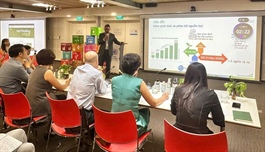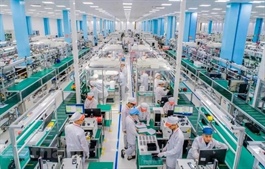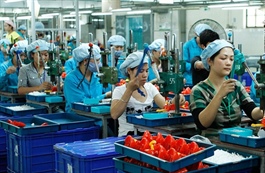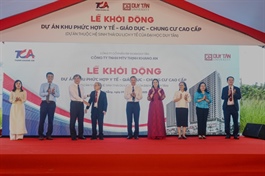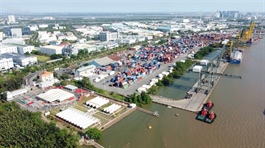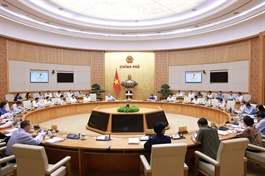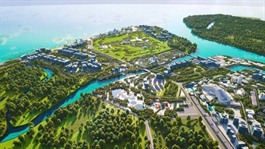Greater Ho Chi Minh City can be quality asset for investors
Greater Ho Chi Minh City can be quality asset for investors
The consolidation of Ho Chi Minh City, Binh Duong, and Ba Ria-Vung Tau is opening up a highly promising investment landscape for the entire region. Jack Nguyen, CEO of Incorp Vietnam, analyses the hurdles that need to be addressed, as well as the growth potential in the coming period.

Jack Nguyen, CEO of Incorp Vietnam |
I have spent time watching the south of Vietnam pull more than its weight. I have seen that Ho Chi Minh City set the pace in finance and services, Binh Duong province powered ahead with industrial areas, and Ba Ria-Vung Tau kept the country plugged into global trade through its ports.
The decision to merge these three into a single mega-urban region does not just redraw a boundary, it rewires how capital, people, and ideas move. For investors, it creates a larger, more coherent market with fewer friction points and more predictable rules.
Ho Chi Minh City is Vietnam’s brain and deal room, home to top universities, venture builders, and a sophisticated consumer base. Binh Duong is the factory floor, known for master-planned estates, reliable utilities, and pragmatic local governance. And Ba Ria-Vung Tau is the sea-facing gateway with deepwater ports and logistics capacity.
Alone, each has limits: Ho Chi Minh City wrestles with space and congestion, Binh Duong lacks a seaport, while Vung Tau needs more value-add manufacturing and services. Together, they solve for one another.
The merger unlocks three levers at once: infrastructure can be planned as a network rather than a patchwork; administration can move to one digital window, and the talent market can widen.
Bottleneck to backbone
For years, the south’s biggest complaint from boardrooms was logistics friction: queues on arteries not designed for today’s volume; industrial zones connected to ports by a chain of roads with mismatched standards, last-mile chaos where containers, commuters, and construction all fight for the same lane.
The merger makes it rational to solve this as a system. When corridors are planned for the whole metropolis - north-south through Binh Duong to the border, and east-west to port clusters and the new international airport at Long Thanh, ports, roads, rails, and factories can be sequenced like a single supply chain.
Investors should watch three shifts. The first is alignment of timelines: expressways, ring roads, and port-adjacent logistics zones moving in lockstep, so factories can plan expansion with confidence. The second aspect involves true intermodality: dry ports, inland container depots, and rail spurs connecting industrial areas to deepwater berths, so containers spend less time on city roads. Thirdly, there will be measurable targets for truck turn-times, customs clearance, and port productivity. When these come together, logistics costs fall and reliability rises.
There will be growing pains. Land acquisition is never simple, and the best plans stall if compensation, resettlement, or environmental permitting is mishandled. Project sequencing will matter: opening a ring road before interchanges and feeder roads are ready simply moves a bottleneck five kilometres outward. Due diligence should not just ask if the road is financed, but if the connectors and operating protocols are synchronised.
Regulatory friction rarely shows up on a map, but always shows up on profit and loss. Before, a cross-border supply chain inside the same metro area could require three sets of rules, stamps, and interpretations. Now there is the mandate and the political cover to harmonise. That means a single promotion strategy, common environmental and fire-safety standards, shared data across departments, and a digital one-stop system for licensing and inspections.
Two design choices will determine success. Firstly, a megacity cannot run everything from one downtown office. Industrial and logistics districts need empowered ‘front counters’ with clear service-level agreements, backed by the same rulebook.
The second choice involves transparency. If a permit takes 20 working days, that countdown should be visible, with named owners and escalation paths. Businesses can live with rules; they cannot live with uncertainty. If the merger reduces variance in interpretation and raises predictability, it will already be a win.
Skills and risks
Talent is the decisive bottleneck for the next decade. The region must do three jobs at once: increase the number of skilled workers, upgrade their skills faster, and keep them here. The merger helps on all three. With one labour market, firms can recruit across districts without administrative friction. With universities and vocational schools in Ho Chi Minh City linked to industrial curricula in Binh Duong and logistics operations in Vung Tau, the training pipeline can be designed with employers, not in isolation.
Where should we focus? Advanced manufacturing needs technicians who can run and maintain automation, not just assemble. Logistics needs planners who understand data, not just dispatch. Ports need safety and environmental skills to meet global standards. These are teachable, but only if companies co-invest.
International talent remains part of the equation. The region should lower friction for domain experts to come, transfer know-how, and train local teams. Clearer rules, faster processing, and multi-year visas for high-skill roles will pay for themselves in productivity. At the same time, quality-of-life investments: schools, healthcare, culture, green space, are not “nice to haves”; they are retention tools. Cities compete on lifestyle as much as on wages.
Every investment case needs a view on risk. Obvious risks are execution delays, over-centralisation, and land market volatility. The less obvious are coordination failures (roads built without last-mile logistics), inconsistent enforcement (rules applied differently across districts), and wage inflation as demand for skills outruns supply.
Mitigation can be carried out through linking capital to milestones, not press releases. Choose park operators with a track record of permitting and utilities, not just land banks. Design portfolios so a delay in one submarket doesn’t halt your value chain. Lock in power, water, and wastewater contracts early. And budget for training, the cheapest way to fix a skills gap is to close it yourself.
Merging Ho Chi Minh City, Binh Duong, and Ba Ria-Vung Tau is not just a governance experiment. It is Vietnam’s most serious attempt yet to turn a cluster of strengths into a single, investable story. Working ahead, building the backbone, rewriting the playbook, and deepening the talent pool is hard. But the payoff, for the country and for investors, is equally clear: a metropolitan economy that can deliver scale with reliability.
As someone who speaks daily with executives deciding where to place their next plant or distribution centre, I believe this merger gives the south its best chance to convert potential into performance. The task now is disciplined execution. If we get that right, Greater Ho Chi Minh City will not just be bigger on a map, it will be better in investor portfolios.
- 11:15 08/09/2025




